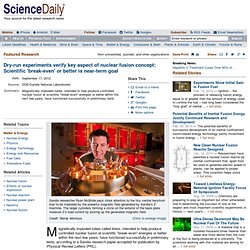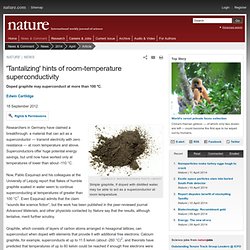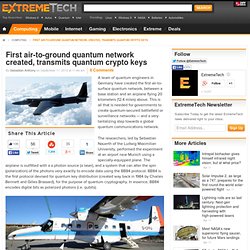

The Official String Theory Web Site. Personal and Historical Perspectives of Hans Bethe. Dry-run experiments verify key aspect of nuclear fusion concept: Scientific 'break-even' or better is near-term goal. Magnetically imploded tubes called liners, intended to help produce controlled nuclear fusion at scientific "break-even" energies or better within the next few years, have functioned successfully in preliminary tests, according to a Sandia research paper accepted for publication by Physical Review Letters (PRL).

To exceed scientific break-even is the most hotly sought-after goal of fusion research, in which the energy released by a fusion reaction is greater than the energy put into it -- an achievement that would have extraordinary energy and defense implications. That the liners survived their electromagnetic drubbing is a key step in stimulating further Sandia testing of a concept called MagLIF (Magnetized Liner Inertial Fusion), which will use magnetic fields and laser pre-heating in the quest for energetic fusion. The liner is intended to contain fusion fuel like a can holds peanut butter, and push it together in nanoseconds like two semicylindrical shovels compacting snow together.
'Tantalizing' hints of room-temperature superconductivity. Simple graphite, if doped with distilled water, may be able to act as a superconductor at room temperature.

Researchers in Germany have claimed a breakthrough: a material that can act as a superconductor — transmit electricity with zero resistance — at room temperature and above. Superconductors offer huge potential energy savings, but until now have worked only at temperatures of lower than about -110 °C. Now, Pablo Esquinazi and his colleagues at the University of Leipzig report that flakes of humble graphite soaked in water seem to continue superconducting at temperatures of greater than 100 °C1. Even Esquinazi admits that the claim “sounds like science fiction”, but the work has been published in the peer-reviewed journal Advanced Materials, and other physicists contacted by Nature say that the results, although tentative, merit further scrutiny. Esquinazi’s team speculates that high concentrations of electrons form at the interfaces between neighbouring thin segments of graphite.
Imagining the Tenth Dimension - A Book by Rob Bryanton. Lectures. First air-to-ground quantum network created, transmits quantum crypto keys. A team of quantum engineers in Germany have created the first air-to-surface quantum network, between a base station and an airplane flying 20 kilometers (12.4 miles) above.

This is all that is needed for governments to create quantum-secured battlefield or surveillance networks — and a very tantalizing step towards a global quantum communications network. The researchers, led by Sebastian Nauerth of the Ludwig Maximilian University, performed the experiment at an airport near Munich using a specially-equipped plane. The airplane is outfitted with a a photon source (a laser), and a system that can alter the spin (polarization) of the photons very exactly to encode data using the BB84 protocol. BB84 is the first protocol devised for quantum key distribution (created way back in 1984 by Charles Bennett and Gilles Brassard), for the purpose of quantum cryptography.
In essence, BB84 encodes digital bits as polarized photons (i.e. qubits). High speed video reveals the bizarre physics of an ordinary water droplet.